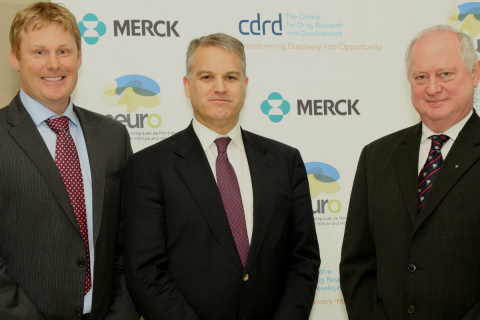Better treatment for brain injury patients

Neuronavigation allows more accurate catheter placements, less surgical complications
Traumatic brain injury is a life-threatening condition that requires fast and accurate intervention. A protocol for a new tool developed by Medtronic Navigation with the help of researchers at the McGill University Health Centre (MUHC) is allowing surgeons to deliver better care than ever.
When someone suffers a serious brain injury, their condition is often complicated by increased pressure on the brain due to swelling. This pressure can cause additional brain damage. One commonly used way to reduce this pressure is by using an external ventricular drain (EVD), a catheter that allows fluid to exit the skull.
Surgeons must often pass the catheter through critical and sensitive parts of the brain to drain the fluid. Traditionally surgeons do this free hand using their knowledge of brain anatomy and best judgement. When surgeons miss the target the device sometimes has to be reinserted, increasing the changes of brain injury, hemorrhage and infection. One study found 23 per cent of EVDs in its sample were misplaced.
In 2014, Dr. Ahmed Al Azri, an MUHC neurosurgery resident, Kelvin Mok, a biomedical engineer and current PhD candidate at the Montreal Neurological Institute and Hospital of McGill University, Dr. Jeffrey Chankowsky, an MUHC neuroradiologist, and Dr. Judith Marcoux, an MUHC neurosurgeon, helped put in application a neuronavigation system known as StealthStation AxiEM with Medtronic Navigation of Louisville, KY. The system uses electromagnetic pulses to tell the surgeon where the catheter is in the brain, based on the CT images to guide the catheter in the brain anatomy. The team elaborated a protocol for image acquisition and for navigation that allows one surgeon to use navigation at the patient’s bedside, in the intensive care unit, at any time of the day or night. The next step was proving the effectiveness of the new tool.
Over the course of two years, the team compared 19 cases where surgeons used the neuronavigation system to 35 cases where they used the freehand technique. They found that when using the neuronavigation system, surgeons misplaced the catheter in 5.3 per cent of cases, compared to 42.9 per cent with the freehand technique. The number of reinsertions in the neuronavigation group was also less than in the freehand group. The study was carried out at the intensive care unit of the Montreal General Hospital.
“The brain is a very delicate organ and any method we can develop to reduce the invasiveness of surgery is a welcome addition to our toolbox,” says Dr. Marcoux. “This study supports the benefits of neuronavigation for EVD placement.”
This study was published in Acta Neurochirurgica on May 29, 2017.